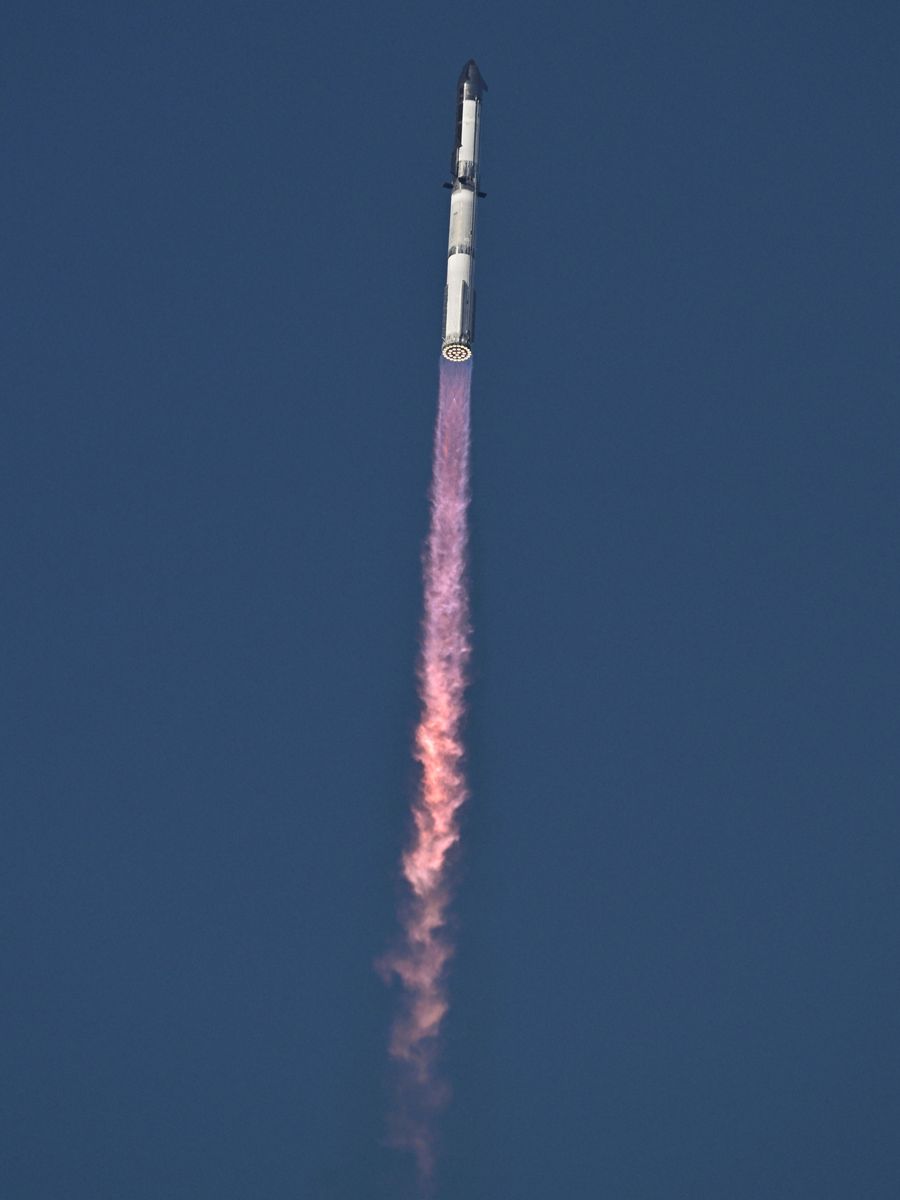Starship: SpaceX's biggest rocket completes spectacular test flight after year of mishaps
SpaceX has successfully launched its biggest ever rocket, named Starship, from Texas after a year of mishaps.

Elon Musk's flagship spacecraft, which has been earmarked for future missions to the moon and Mars, took off just after 6.30pm local time on Tuesday.
It launched into orbit and deployed eight dummy satellites before splashing down as planned in the Indian Ocean.
The aim was to test the 403ft-tall ship's new heat shield tiles and satellite deployment abilities, among hundreds of other upgrades from past iterations.
Three minutes into the flight and dozens of miles above ground, the rocket's upper half separated as planned from its Super Heavy booster - the 232ft first stage that normally lands back in its launch tower's giant catch-arms.
But this time the booster, which SpaceX said had been fitted with larger and stronger fins for greater stability, targeted the Gulf of Mexico waters to demonstrate an alternate landing strategy.
Meanwhile, Starship was launched into space, and deployed its eight dummy Starlink satellites, a key demonstration for a rocket that represents the future of SpaceX's dominant launch business.
An hour into the mission, Starship re-entered Earth's atmosphere over the Indian Ocean, putting a variety of hexagonal heat shield tiles to the test as it blazed at supersonic speed.
Spacecraft that return to Earth have historically required new heat shields or repairs after each mission due to damage that occurs from high-speed atmospheric friction.
"A lot was hanging on this test flight, and they nailed it," said Sky's science correspondent Thomas Moore.
This was the fourth test flight of the year for the world's largest and most powerful rocket, after the previous three ended in failure.
This time, however, the booster came down in the controlled descent as planned - SpaceX decided not to send it to the launch pad for its classic "chopsticks" catch.
The upper-stage, called the ship, released its satellites, relit its engine and safely made it back through the atmosphere.
That's despite the fact that engineers had removed some of the tiles from the heat shield in order to stress-test the structure.
They were also testing other ways of cooling down the rocket for "what is a blistering ride," according to Moore.
However, even though this test flight has been a success, the rocket hasn't yet proved itself ready to go to the moon and Mars, he said.
"Elon Musk has talked about how difficult it has been designing a heat shield that is robust enough for the really quick turnarounds that he envisages for these rockets," said Moore, who said Musk wants the turnaround to be as "fast as an airliner turns around at an airport".
NASA is "banking on" SpaceX to get the Starship ready in just two years to take people and goods to the surface of the moon.
Elon Musk has even bigger dreams and has talked about an uncrewed Starship going all the way to Mars by the end of next year.
"Now, at the moment, that looks doubtful, but you'd never bet against SpaceX," said Moore.
But SpaceX has been trying to create an exterior shield that requires little to no refurbishment after each use.
The crewless demo launch came after back-to-back tests in January and March ended just minutes after lift-off, raining wreckage into the ocean, before the most recent test in May ended when the spacecraft tumbling out of control and breaking apart.
That all came after the first Starship exploded minutes into its inaugural test flight in 2023.
NASA has ordered two Starships to land astronauts on the moon later this decade, while Mr Musk has ambitious plans to send humans to space in the next few years.
-SKY NEWS







